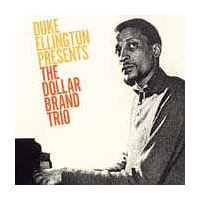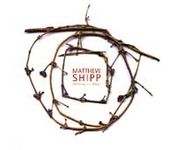
The E Flat Ionian mapped to the Cube-root-of-2 Scale.
 With Black History Month rapidly drawing to a close at HurdAudio my ears are drawn to X, The Life and Times of Malcolm X: An Opera in Three Acts by Anthony Davis. Initially composed from 1984 - 1985, this work had its premier in New York City in 1986 and this recording is from 1992. This work needs to be staged again - and often. This opera is a high accomplishment that approaches a massive range of aesthetic and social issues that rarely combine for such substantial impact. There is much more happening in this work than meets the ear in a single listening and repeated exposures to this material is incredibly rewarding. Repeated stagings would be ideal.
With Black History Month rapidly drawing to a close at HurdAudio my ears are drawn to X, The Life and Times of Malcolm X: An Opera in Three Acts by Anthony Davis. Initially composed from 1984 - 1985, this work had its premier in New York City in 1986 and this recording is from 1992. This work needs to be staged again - and often. This opera is a high accomplishment that approaches a massive range of aesthetic and social issues that rarely combine for such substantial impact. There is much more happening in this work than meets the ear in a single listening and repeated exposures to this material is incredibly rewarding. Repeated stagings would be ideal. There's been some discussion online about who should or could be regarded as the "greatest American composer" with various blogs promoting their favored candidate. Setting aside the merits of bestowing such a title to just one individual there's a strong argument to be made that Billy Strayhorn is - and was - possibly the greatest composer that this culture has produced. His creative output is dense with inventiveness at so many levels. From his outstanding arranging sensibilities to the twists of his melodic ideas he brought some big ears to his craft and jazz history is much richer because of his efforts.
There's been some discussion online about who should or could be regarded as the "greatest American composer" with various blogs promoting their favored candidate. Setting aside the merits of bestowing such a title to just one individual there's a strong argument to be made that Billy Strayhorn is - and was - possibly the greatest composer that this culture has produced. His creative output is dense with inventiveness at so many levels. From his outstanding arranging sensibilities to the twists of his melodic ideas he brought some big ears to his craft and jazz history is much richer because of his efforts. Black History Month continues at HurdAudio with a listen to Juju by Wayne Shorter circa 1964. This quartet is outstanding. Each name inspires profound awe for jazz aficionados: Wayne Shorter on tenor, McCoy Tyner on piano, Reginald Workman on bass and Elvin Jones on drums. Throw in the fact that this is a Blue Note record from one of their golden eras and you come up with a listening experience that is deeply satisfying every time.
Black History Month continues at HurdAudio with a listen to Juju by Wayne Shorter circa 1964. This quartet is outstanding. Each name inspires profound awe for jazz aficionados: Wayne Shorter on tenor, McCoy Tyner on piano, Reginald Workman on bass and Elvin Jones on drums. Throw in the fact that this is a Blue Note record from one of their golden eras and you come up with a listening experience that is deeply satisfying every time. The celebration of Black History Month at HurdAudio continues with an ear wrapped around Monads - Triple Slow Mix - Cycle - Shadowgraph, 5 (Sextet) by George Lewis from 1977.
The celebration of Black History Month at HurdAudio continues with an ear wrapped around Monads - Triple Slow Mix - Cycle - Shadowgraph, 5 (Sextet) by George Lewis from 1977. Black History Month at HurdAudio takes a spin of Abdullah Ibrahim's debut recording from 1963 - back when he went by the name of Dollar Brand - Duke Ellington Presents The Dollar Brand Trio.
Black History Month at HurdAudio takes a spin of Abdullah Ibrahim's debut recording from 1963 - back when he went by the name of Dollar Brand - Duke Ellington Presents The Dollar Brand Trio. Black History Month at HurdAudio tunes the ears to a recording from August 1996 from Henry Threadgill & Make A Move: Where's Your Cup? Make A Move is a quintet featuring Henry Threadgill on alto sax and flute, Brandon Ross on electric and classical guitars, Tony Cedras on accordion and harmonium, Stomu Takeishi on 5-string fretless bass and J.T. Lewis on drums.
Black History Month at HurdAudio tunes the ears to a recording from August 1996 from Henry Threadgill & Make A Move: Where's Your Cup? Make A Move is a quintet featuring Henry Threadgill on alto sax and flute, Brandon Ross on electric and classical guitars, Tony Cedras on accordion and harmonium, Stomu Takeishi on 5-string fretless bass and J.T. Lewis on drums. Black History Month at HurdAudio takes a turn toward one of the most amazing live recordings I've ever heard: Immortal Concerts: Jazz Festival, Antibes, July 13, 1960 by Charles Mingus and Eric Dolphy. This one is another must for the serious jazz collector.
Black History Month at HurdAudio takes a turn toward one of the most amazing live recordings I've ever heard: Immortal Concerts: Jazz Festival, Antibes, July 13, 1960 by Charles Mingus and Eric Dolphy. This one is another must for the serious jazz collector. Black History Month at HurdAudio turns a focused listen toward Lifelong Ambitions - a duet album for violin and piano recorded at Washington Square Church, NYC on March 11, 1977 by Leroy Jenkins and Muhal Richard Abrams.
Black History Month at HurdAudio turns a focused listen toward Lifelong Ambitions - a duet album for violin and piano recorded at Washington Square Church, NYC on March 11, 1977 by Leroy Jenkins and Muhal Richard Abrams. Black History Month continues at HurdAudio with ears tuned toward Capricorn Rising from October 16-17, 1975 by pianist Don Pullen and reedsman Sam Rivers. The rest of the quartet on this recording consists of Alex Blake on bass and Bobby Battle on drums. This is a great record and should be part of any serious jazz collection.
Black History Month continues at HurdAudio with ears tuned toward Capricorn Rising from October 16-17, 1975 by pianist Don Pullen and reedsman Sam Rivers. The rest of the quartet on this recording consists of Alex Blake on bass and Bobby Battle on drums. This is a great record and should be part of any serious jazz collection. For those in the know, Armageddon was recorded on February 20, 1995 at Prince Studios in New York City.
For those in the know, Armageddon was recorded on February 20, 1995 at Prince Studios in New York City.
 Black History Month continues at HurdAudio with a focused listen to A Quiet Place in the Universe by the other-worldly Sun Ra & his Arkestra recorded live in 1976-77. This is a particularly interesting period of Sun Ra's multi-faceted creative output. And typical for a recorded document of Ra's incredibly inspired arranging prowess this one proves to be bit rough around the edges in production quality.
Black History Month continues at HurdAudio with a focused listen to A Quiet Place in the Universe by the other-worldly Sun Ra & his Arkestra recorded live in 1976-77. This is a particularly interesting period of Sun Ra's multi-faceted creative output. And typical for a recorded document of Ra's incredibly inspired arranging prowess this one proves to be bit rough around the edges in production quality. Black History Month is underway at HurdAudio. Which calls for a celebration and focus upon a significant body of music. Tonight I'm visiting a relatively new acquisition that has caught my ear in a big way these past few weeks: Harmony and Abyss by pianist Matthew Shipp - recorded in 2004.
Black History Month is underway at HurdAudio. Which calls for a celebration and focus upon a significant body of music. Tonight I'm visiting a relatively new acquisition that has caught my ear in a big way these past few weeks: Harmony and Abyss by pianist Matthew Shipp - recorded in 2004.